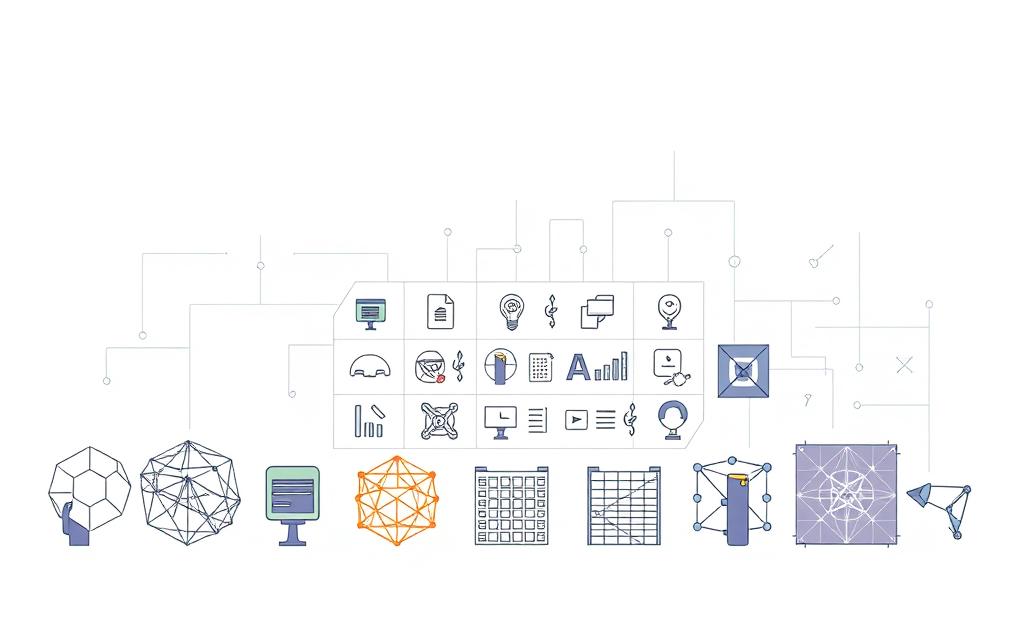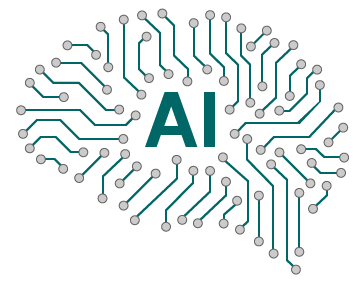Modern businesses rely on artificial intelligence to analyze vast amounts of data efficiently. Unlike traditional programming, machine learning allows systems to improve automatically through experience. This technology powers everything from healthcare diagnostics to financial forecasting.
At its core, ML uses algorithms to identify patterns without explicit instructions. Companies like AWS and Google Cloud leverage neural networks to enhance decision-making. The result? Faster insights and scalable models that adapt over time.
Industries benefit from reduced manual effort and improved accuracy. For example, IBM’s structured learning framework helps organizations implement these tools effectively. However, ethical considerations remain crucial when deploying automated systems.
What Is Machine Learning Solutions?
Today’s technology landscape thrives on automated pattern recognition. These systems evolve through data exposure rather than rigid programming. From medical research to stock market predictions, they deliver actionable insights faster than traditional methods.
Defining Modern Automated Learning
These computer systems enhance performance through experience. Unlike conventional software, they adjust algorithms independently. This capability stems from three core components identified by UC Berkeley and IBM researchers:
- Decision processes – Analyze inputs to generate predictions
- Error functions – Measure accuracy against known results
- Optimization – Refines models through repeated adjustments
Essential Elements of Intelligent Systems
Advanced implementations use layered neural networks for complex tasks. These structures process unstructured information like images or speech. Traditional systems require organized data, while deep learning handles raw inputs.
| Component | Function | Example |
|---|---|---|
| Input Layer | Receives raw data | Pixel values in image recognition |
| Hidden Layers | Process information | Feature detection in scans |
| Output Layer | Delivers results | Diagnosis probability scores |
Organizations like AWS demonstrate how these systems transform industries. Financial institutions detect fraudulent transactions, while hospitals analyze medical images with unprecedented accuracy.
How Machine Learning Works
Behind every smart recommendation and accurate prediction lies a sophisticated system of automated decision-making. These systems process data through structured workflows, refining their outputs with each iteration. Here’s how they achieve precision.
The Decision Process: Predictions and Classifications
Algorithms analyze inputs to generate outputs, using two primary methods:
- Regression models predict numerical values (e.g., housing prices).
- Classification trees categorize data (e.g., spam vs. legitimate emails).
IBM’s research shows these methods rely on weighted features to minimize error. For instance, a spam filter improves by analyzing email patterns over time.
Error Functions: Measuring Model Accuracy
Systems evaluate performance using metrics like:
- Mean Squared Error (MSE) for regression tasks.
- Confusion matrices for classification accuracy.
Google Cloud’s framework aligns predictions with training data, ensuring reliability. Poor-quality inputs, however, lead to flawed outputs—highlighting the “GIGO” (Garbage In, Garbage Out) principle.
Model Optimization: Iterative Learning
Techniques like gradient descent adjust models by calculating error gradients. AWS uses backpropagation in neural networks to refine fraud detection systems. Key steps include:
- Cross-validation to prevent overfitting.
- Weight adjustments until accuracy thresholds are met.
- Resource allocation for scalable training.
This cyclical process ensures continuous improvement, mirroring human learning but at computational scale.
Machine Learning vs. Artificial Intelligence vs. Deep Learning
The relationship between AI, ML, and deep learning often causes confusion. While these terms are interconnected, they represent distinct layers of automation. Artificial intelligence serves as the broadest category, encompassing any system mimicking human cognition.
Key Differences and Overlaps
Machine learning is a subset of AI focused on pattern recognition through data. Unlike rule-based programming, ML models improve autonomously. For example, Netflix’s recommendation engine refines suggestions based on viewing habits.
Deep learning takes this further, using multi-layered neural networks to process complex inputs. AWS defines deep learning as networks with three or more hidden layers. This enables tasks like real-time language translation or tumor detection in MRIs.
Neural Networks as the Bridge
These networks form the backbone of deep learning, mimicking human brain structures. Shallow networks handle basic tasks, while deep variants excel in unstructured data analysis. Below is a comparison:
| Type | Layers | Use Case |
|---|---|---|
| Shallow Network | 1–2 | Spam filtering |
| Deep Network | 3+ | Autonomous driving |
Industry applications reveal overlaps. Alexa combines AI for natural language understanding with deep learning for speech recognition. Similarly, Google’s AlphaGo used reinforcement learning to master Go, showcasing AI’s strategic potential.
Types of Machine Learning Models
Organizations leverage different approaches to extract insights from complex datasets. These machine learning models fall into four primary categories, each suited for specific data scenarios. Choosing the right method depends on the problem structure and available resources.

Supervised Learning: Labeled Data Training
This method uses pre-tagged data to train algorithms. IBM’s spam filter exemplifies supervised learning, where emails are labeled as “spam” or “not spam.” Two common techniques include:
- Regression models predict numerical values (e.g., home prices).
- Classification models categorize inputs (e.g., disease diagnoses).
Unsupervised Learning: Pattern Discovery
Here, systems identify hidden structures in raw data. AWS uses clustering for customer segmentation, grouping users by purchase behavior. Key techniques include:
- K-means clustering for market basket analysis.
- Dimensionality reduction (e.g., PCA) to simplify datasets.
Semi-Supervised and Reinforcement Learning
Semi-supervised models blend labeled and unlabeled data, ideal for limited tagged datasets. Reinforcement learning, meanwhile, relies on trial-and-error. IBM Watson’s Jeopardy victory showcased this—earning rewards for correct answers.
Common Machine Learning Algorithms
From fraud detection to medical imaging, advanced algorithms power modern innovations. These tools process data to identify patterns, optimize decisions, and automate tasks. Selecting the right method depends on the problem type and available resources.
Neural Networks and Decision Trees
Neural networks mimic the human brain’s structure, ideal for complex tasks like speech recognition. Layers of interconnected nodes analyze unstructured inputs, such as images or audio. Google’s DeepMind uses this approach for protein-folding predictions.
Decision trees, in contrast, offer transparency. These flowchart-like models split data into branches, making them popular for credit scoring. AWS highlights their auditability compared to neural network “black boxes.”
Regression Models and Clustering Techniques
Linear regression predicts numerical outcomes, like sales forecasts, while logistic regression classifies data (e.g., spam detection). Both methods rely on labeled datasets for training.
Clustering groups unlabeled data into meaningful categories. Retailers use k-means to segment customers by purchase behavior. IBM’s tools apply this for market basket analysis.
| Algorithm | Strength | Use Case |
|---|---|---|
| Random Forest | High accuracy | Fraud detection |
| SVM | Effective for small datasets | Medical diagnosis |
| Naïve Bayes | Fast processing | Email filtering |
Emerging AutoML tools automate model selection, reducing manual effort. Platforms like Google’s Vertex AI simplify deployment for businesses.
Industries Transformed by Machine Learning
Cutting-edge algorithms are reshaping entire sectors, from hospitals to hedge funds. These intelligent systems analyze complex data faster than human teams, delivering actionable insights. Across industries, adoption drives both efficiency gains and breakthrough innovations.
Healthcare: Diagnostics and Imaging
Radiology departments now use machine learning to spot tumors in X-rays with 95% accuracy. IBM’s Watson analyzes MRIs 30% faster than traditional methods, helping doctors prioritize critical cases. Key applications include:
- Early disease detection through pattern recognition in scans
- Molecular structure analysis for accelerated drug discovery
- Predictive models identifying patient risk factors
At Mayo Clinic, these tools reduced diagnostic errors by 40%. “Automated imaging analysis gives clinicians more time for patient care,” notes Dr. Elena Rodriguez, a lead researcher.
Finance: Fraud Detection and Trading
Banks process millions of transactions daily using machine learning security systems. PayPal’s real-time monitoring stops $10 million in fraudulent payments monthly. Financial institutions leverage:
- Algorithmic trading models executing microsecond transactions
- Behavioral analysis detecting unusual account activity
- Risk assessment tools for loan approvals
“Our neural networks identify fraud patterns invisible to rule-based systems,” explains AWS financial solutions architect Mark Chen.
Goldman Sachs reports 25% faster trade executions using Google Cloud’s predictive algorithms. These advancements demonstrate machine learning’s transformative potential across critical sectors.
Everyday Applications of Machine Learning
From morning routines to late-night entertainment, intelligent systems shape daily experiences. These tools analyze data to deliver seamless interactions, often without users realizing the machine learning behind them.
Voice Assistants and Smart Recommendations
Devices like Alexa and Google Home use speech recognition to understand commands. IBM’s Watson powers Siri’s ability to parse complex queries. Behind the scenes, neural networks process accents and dialects for accurate responses.
Streaming platforms like Netflix and Spotify rely on algorithms to suggest content. AWS tools analyze viewing habits to refine recommendations. The result? Personalized playlists and binge-worthy shows tailored to individual tastes.
Automated Customer Service Chatbots
Bank of America’s Erica handles millions of queries monthly. These software assistants learn from interactions to improve responses. Google Cloud’s NLP models enable human-like conversations for support teams.
Other widespread applications include:
- Email filtering: Gmail’s spam detection uses labeled data to block phishing attempts.
- Social media: Facebook’s facial recognition tags friends in photos automatically.
- E-commerce: Amazon’s “Frequently Bought Together” boosts sales through pattern analysis.
“The integration of machine learning into daily tools has redefined convenience,” notes a lead engineer at AWS.
Advantages of Implementing Machine Learning
Organizations worldwide are gaining competitive edges by adopting intelligent automation. These systems unlock new efficiencies while transforming how data drives decisions. From Fortune 500 companies to startups, the benefits span every industry.

Enhanced Efficiency Through Automation
Manual processes that once took hours now complete in minutes. AWS reports that document processing with OCR and NLP cuts time by 80%. Key automation benefits include:
- Predictive analytics for accurate supply chain forecasting
- Fraud detection models that evolve with emerging threats
- Energy optimization in smart buildings through usage patterns
Google Cloud’s case studies show manufacturers reducing defects by 45% using automated quality control. “The speed advantage is undeniable,” notes a Tesla production engineer. “Real-time analysis prevents costly errors.”
Continuous Improvement with Data
Unlike static software, these systems grow smarter with each interaction. Financial institutions like JPMorgan Chase credit ML for:
- Adaptive credit scoring that responds to market changes
- Hyper-personalized marketing with 1:1 recommendations
- Scalable processing of exponentially growing data volumes
“Our fraud detection accuracy improves weekly as the model ingests new transaction patterns,” explains a Visa security architect.
According to industry research, early adopters report 30% cost reductions in data analysis tasks. The combination of automation and continuous learning creates compounding value for business operations.
Challenges in Machine Learning Adoption
While intelligent automation offers transformative potential, implementation hurdles exist. Organizations face obstacles ranging from data preparation to ethical concerns. Addressing these challenges ensures successful deployment of advanced systems.
Data Quality and Quantity Requirements
High-performing models demand clean, abundant data. IBM’s studies reveal that 80% of implementation time involves cleaning unstructured information. Common issues include:
- Labeling costs: Manual tagging for supervised learning proves expensive
- Sample size limitations: Small datasets yield unreliable predictions
- Format inconsistencies: Merging disparate sources creates errors
AWS research highlights how imbalanced datasets introduce bias. For example, facial recognition systems trained primarily on one demographic group underperform for others.
Overfitting and Model Bias Risks
Perfect training accuracy doesn’t guarantee real-world performance. Overfit models memorize data instead of learning patterns. Amazon’s discontinued hiring tool demonstrated this, favoring male candidates due to historical hiring patterns.
Other critical challenges include:
- Computational costs: Deep learning requires expensive GPU clusters
- Talent shortages: Demand for skilled data scientists outpaces supply
- Regulatory compliance: EU’s AI Act mandates explainable algorithms
“Version control becomes complex when models evolve weekly,” notes a Google Cloud architect. “Tracking changes ensures auditability.”
Adversarial attacks present additional risks. Hackers can manipulate image inputs to fool recognition systems, compromising security applications. These challenges underscore the need for robust testing frameworks.
Ethical Considerations in Machine Learning
As intelligent systems become more advanced, ethical challenges emerge. Responsible development requires addressing bias, privacy, and transparency issues. Organizations must balance innovation with accountability.

Bias in Training Data and Outcomes
Historical data often reflects societal inequalities. The COMPAS recidivism algorithm showed racial disparities, incorrectly flagging Black defendants as higher risk. IBM’s research highlights three bias sources:
- Sample bias: Incomplete or skewed data representation
- Label bias: Human prejudices in training labels
- Algorithmic bias: Flawed weighting of features
Google Cloud recommends fairness metrics to evaluate models. Techniques like reweighting and adversarial debiasing help correct imbalances.
Privacy Concerns and Data Security
Protecting sensitive information remains critical under laws like GDPR and CCPA. IBM discontinued general-purpose facial recognition over privacy risks. Key challenges include:
- PII exposure: Models may memorize personal details from training data
- Model inversion attacks: Extracting confidential inputs from outputs
- Compliance gaps: Differing regional regulations
“Federated learning allows analysis without centralizing raw data,” notes an AWS security specialist. “This preserves privacy while enabling insights.”
Emerging solutions like synthetic data generation and homomorphic encryption address these concerns. The EU’s Ethics Guidelines provide frameworks for trustworthy AI development.
Machine Learning in Business Decision-Making
Strategic decision-making now integrates automated insights at unprecedented speed. Enterprises leverage machine learning to transform raw data into competitive advantages. From retail to logistics, these systems optimize operations while reducing human bias.
Real-Time Data Analysis for Strategic Insights
Modern corporations process information streams instantly through adaptive models. AWS reports inventory optimization improvements up to 35% using predictive analysis. Key applications include:
- Dynamic pricing: Airlines adjust fares using demand prediction algorithms
- Customer retention: Telecoms identify churn risks 8 weeks earlier
- Sentiment tracking: Brand perception measured across social platforms
Google Cloud’s logistics partners achieve 22% faster deliveries through route optimization. “Real-time adjustments account for weather and traffic simultaneously,” notes a FedEx operations director.
Case Studies: Retail and Logistics
Industry leaders demonstrate machine learning’s transformative impact:
- Walmart reduced overstock by 20% using demand forecasting systems
- DHL cut fuel costs 15% with AI-powered delivery routing
- Siemens decreased equipment failures by 40% through predictive maintenance
“Our machine learning models process 14 million data points daily to optimize shelf inventory,” reveals a Target supply chain VP.
Banking institutions now approve loans 60% faster while maintaining risk standards. These examples prove how intelligent analysis elevates business decisions across sectors.
Future Trends in Machine Learning
Innovation accelerates as intelligent systems evolve beyond traditional boundaries. The next decade will see transformative shifts in how technology processes information, with IBM and AWS leading development.

Generative AI Revolution
Creative machine learning reaches new heights with tools like GPT-4. IBM’s research shows these models now produce human-quality content across media formats. Key applications include:
- Automated video script generation for marketing teams
- Dynamic product descriptions that adapt to buyer personas
- AI-assisted design prototypes in architecture
These advancements raise important questions about intellectual property and authenticity in digital content.
Decentralized Processing Power
Edge computing brings machine learning directly to devices. AWS demonstrates this in self-driving cars that process sensor data locally. Benefits include:
- Faster response times without cloud latency
- Enhanced privacy through localized data processing
- Reliable operation in low-connectivity areas
Emerging areas show equal promise:
Quantum-enhanced algorithms may soon solve complex chemistry simulations. Neuromorphic chips mimic brain structures for energy-efficient processing. AutoML platforms enable non-experts to build custom systems.
“Federated learning represents the next privacy frontier,” notes an AWS technical lead. “Devices collaborate without sharing raw data.”
Industry 4.0 integration connects these trends. Smart factories use edge-based neural networks for real-time quality control while generative AI optimizes supply chains.
Selecting the Right Machine Learning Platform
Choosing an optimal platform for intelligent automation requires careful evaluation. Businesses must balance machine learning capabilities with operational needs and budget constraints. Leading providers like AWS, Google Cloud, and Microsoft Azure offer distinct advantages.
Evaluating MLOps and Automation Features
Modern systems demand robust MLOps for seamless deployment. IBM’s research highlights three critical evaluation criteria:
- CI/CD pipelines for continuous model updates
- Synthetic data generation tools to enhance training sets
- Visual modeling interfaces for non-technical teams
Platform comparisons reveal key differences:
| Feature | AWS SageMaker | Google Vertex AI |
|---|---|---|
| AutoML | Limited free tier | Generous free credits |
| Hugging Face | Native integration | API-based connection |
“MLOps maturity determines how quickly insights translate to production,” notes an Azure solutions architect.
Cost vs. Precision Trade-offs
High-accuracy models often require expensive GPU clusters. AWS cost optimization strategies include:
- Spot instances for non-critical training jobs
- Model compression techniques to reduce compute needs
- Pre-built algorithms for common use cases
ROI considerations should account for:
- Total cost of ownership across the data lifecycle
- Team training requirements
- Vendor lock-in risks with proprietary tools
TensorBoard monitoring helps visualize performance metrics. Security features like IAM roles and encryption ensure compliance during analysis.
Getting Started with Machine Learning
Entering the field of intelligent automation requires strategic skill development. Beginners should focus on building strong foundations before tackling complex algorithms. Cloud platforms now offer accessible environments to experiment with real-world data.
Educational paths vary from formal degrees to self-paced certifications. IBM’s 2023 research shows 60% of professionals enter the field through hybrid learning approaches. “Combining theoretical knowledge with hands-on projects creates versatile talent,” notes their chief data scientist.
Essential Skills and Educational Paths
Core competencies for aspiring professionals include:
- Programming: Python dominates with 78% adoption (Stack Overflow 2023)
- Statistical methods: Regression analysis and probability theory
- Linear algebra for neural network implementations
Leading training resources compared:
| Resource | Focus Area | Time Commitment |
|---|---|---|
| Coursera ML Specialization | Fundamental concepts | 4 months (5hrs/week) |
| Kaggle Microcourses | Practical competitions | Self-paced |
| AWS Certification Prep | Cloud deployment | 8-12 weeks |
Hardware considerations:
- Start with CPU-based projects (MNIST datasets)
- Progress to GPU acceleration for deep learning
- Cloud credits reduce upfront infrastructure costs
Cloud-Based Tools for Beginners
Major providers offer starter packages:
- Google Cloud’s $300 Vertex AI credits
- AWS SageMaker free tier (750 hours/month)
- IBM Watson Studio lite plan
“Google Colab provides the easiest entry point with pre-configured notebooks,” advises an ML engineer at Spotify. “Teams can validate concepts before infrastructure investments.”
Career progression typically follows:
- Data analyst → ML engineer (2-3 years)
- Specialization in NLP/computer vision
- Architecture roles designing enterprise models
Conclusion
Forward-thinking enterprises harness algorithmic power to stay competitive. Machine learning transforms industries by analyzing data faster than manual methods. Healthcare, finance, and retail benefit from predictive models and neural networks.
Ethical implementation remains crucial. Balance innovation with accountability when deploying these systems. Future trends like generative AI and edge computing will further redefine possibilities.
Start small with cloud platforms like AWS or Google Cloud. Upskill teams to leverage these tools effectively. In the digital age, adopting machine learning isn’t optional—it’s essential for growth.
Explore IBM’s research or Coursera courses to begin. Responsible use of data ensures sustainable progress across all sectors.













